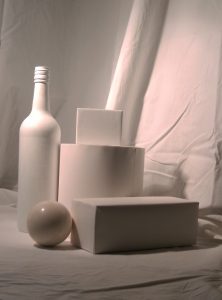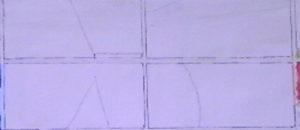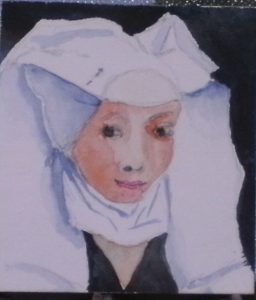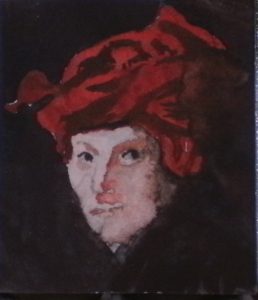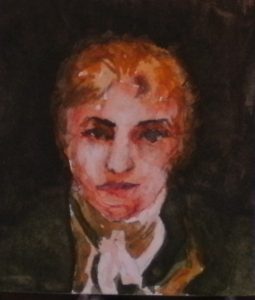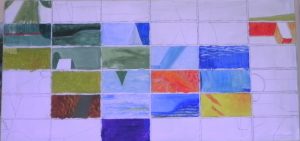 I decided that the best thing to do was introduce one colour at a time and see what happened. Orange was my first choice, a good, strong, cheerful colour. That’s him near the middle of the canvas. Now orange partners well with turquoises and blues, so I tentatively surrounded my orange tile with bluish ones trying always to keep to the tones in my corresponding reference. The lemon yellow tile was my next offering, which in turn suggested a grey-green. I used this on quite a number of tiles on the left hand side, though I think the sharper green tiles are a mistake, taking too far from my original blues.
I decided that the best thing to do was introduce one colour at a time and see what happened. Orange was my first choice, a good, strong, cheerful colour. That’s him near the middle of the canvas. Now orange partners well with turquoises and blues, so I tentatively surrounded my orange tile with bluish ones trying always to keep to the tones in my corresponding reference. The lemon yellow tile was my next offering, which in turn suggested a grey-green. I used this on quite a number of tiles on the left hand side, though I think the sharper green tiles are a mistake, taking too far from my original blues.
Then I stood back and looked at it for a while. The juxtaposition of oranges blues and greens made me think of a fish pond so I explored that idea by introducing textures on some of the tiles.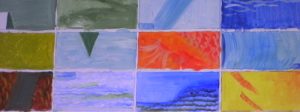 There are some ripples on the blue tiles and some scaly shapes on the orange ones. I don’t think the detail should dominate or over-complicate matters, and I haven’t worked out what sort of detail I should suggest on the green Lilypad! Work in Progress!
There are some ripples on the blue tiles and some scaly shapes on the orange ones. I don’t think the detail should dominate or over-complicate matters, and I haven’t worked out what sort of detail I should suggest on the green Lilypad! Work in Progress!

